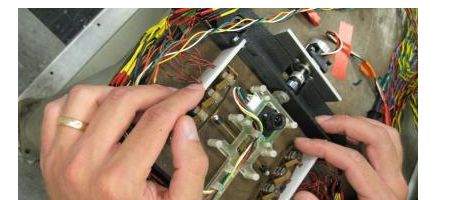Robotics engineers have replicated the muscle motion of the human eye to control camera systems more effectively.

The new control system is based on a piezoelectric cellular actuator that allows a robot eye to move more like a real one, making video feeds from robots more intuitive.
“For a robot to be truly bio-inspired, it should possess actuation, or motion generators, with properties in common with the musculature of biological organisms,” says PhD candidate Joshua Schultz of the Georgia Institute of Technology.
“The actuators developed in our lab embody many properties in common with biological muscle, especially a cellular structure. Essentially, in the human eye, muscles are controlled by neural impulses. Eventually, the actuators we are developing will be used to capture the kinematics and performance of the human eye.”
The development should be particularly useful for systems with a large number of active units operating together, such as industrial robots, medical and rehabilitation robots and intelligent assistive robots.
“Robustness against uncertainty of model and environment is crucial for robots physically interacting with humans and environments,” says assistant professor Jun Ueda.
“Successful integration relies on the coordinated design of control, structure, actuators and sensors by considering the dynamic interaction among them.”
Piezoelectric materials expand or contract when electricity is applied to them, providing a way to transform input signals into motion, and this new cellular actuator concept was inspired by biological muscle structure, connecting many small actuator units in series or in parallel.
“Each muscle-like actuator consists of a piezoelectric material and a nested hierarchical set of strain amplifying mechanisms,” says Ueda.
“Unlike traditional actuators, piezoelectric cellular actuators are governed by the working principles of muscles – namely, motion results by discretely activating, or recruiting, sets of active fibers, called motor units.”






